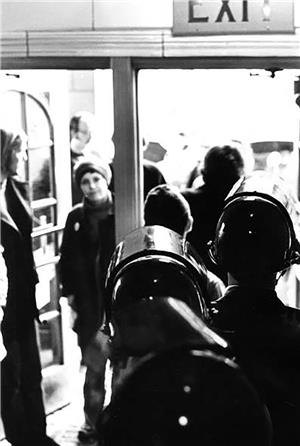On March 12, 1970, 200 Seattle and King County Police Officers occupy buildings at the University of Washington after demonstrations over several days by the Black Student Union and the Seattle Liberation Front disrupt classes and injure 17 persons. The Black Student Union objects to athletic activities competitions with Brigham Young University because its sponsor, the Church of Jesus Christ, Latter Day Saints (Mormons) discriminated against African Americans in its liturgy.
Demonstrations by the Black Student Union and its supporters from the Seattle Liberation Front began on March 5, 1970, with the brief occupation of Thomson Hall. The following day, disruptions increased as roving gangs of protesters invaded several buildings. The University obtained a court injunction against the Black Student Union, the Seattle Liberation Front and "those acting in concert with them" prohibiting "the use of force of violence in such a way as to interfere with the normal activity of the university" (The Seattle Times). Although University officials announced on March 8, 1970 that they would not renew any of the current contracts with Brigham Young University, the demonstrations continued with hundreds of protesters entering buildings and disrupting classes.
On March 10 and 11, 1970, students begin to resist the demonstrators and 17 persons were injured, including some innocent bystanders. A woman student had her teeth knocked out by a protester. Busloads of police were summoned, but the demonstrations ended before officers could be deployed. An arson fire in Parrington Hall and incidents of vandalism all over the campus prompted Acting University President John Hogness (President Charles Odegaard [1911-1999] was in Europe) to request the presence of Seattle and King County Police to insure that classes would continue.
Officers from Seattle and King County arrived on March 12 and were staged in several buildings around campus. There were no more disruptions and the academic term ended peacefully the following week.

